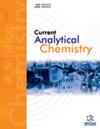多氯联苯对 Cylindrotheca closterium (Ehrenberg) Reimann et Lewin 硅藻富集培养物的生产特征和岩藻黄素/脂肪酸含量的影响
IF 1.7
4区 化学
Q3 CHEMISTRY, ANALYTICAL
引用次数: 0
摘要
背景:自 20 世纪中期以来,多氯联苯(PCBs)已成为水生环境中最主要的人为有机污染物之一。在评估沉积物毒性的实验室实验中,经常使用 Cylindrotheca 属微囊底栖藻类。最近,从塞瓦斯托波尔湾(黑海)沿海地区受多氯联苯污染的沉积物中发现了一种属于 Cylindrotheca 属的新型底栖硅藻。这种藻类具有很高的生物量生产率,能够合成岩藻黄素和多种脂肪酸。Cylindrotheca closterium 能够代谢底层沉积物中的有机污染物。研究目的本研究旨在通过为期 9 天的实验,研究多氯联苯对 C. closterium 的生长模式和生理反应的影响,实验中将微藻置于 0.0003 至 100 毫克/升不同浓度的多氯联苯中。结果显示实验结果表明,C. closterium 可以在多氯联苯浓度为 0.0003 至 10 毫克/升的环境中生长,这表明它对中等程度的多氯联苯暴露具有适应能力。此外,还观察到 C. closterium 在多氯联苯暴露下的适应性生化过程。值得注意的是,在实验的第六天,培养物进入静止生长阶段,与对照组相比,总脂质含量显著增加了 1.6 倍,岩藻黄素增加了 4.6 倍。然而,当多氯联苯浓度为 100 毫克/升时,培养物的生长速度明显下降,同时总脂质和岩藻黄质的含量也有所减少,这表明 C. closterium 对 10 至 100 毫克/升浓度的多氯联苯有一定的耐受阈值。此外,在接触多氯联苯的情况下,还注意到克氏螯虾的脂肪酸谱发生了变化,其特点是多烯脂肪酸含量减少,单烯脂肪酸含量增加。结论这项研究强调了 C. closterium 对中等浓度多氯联苯的适应能力,并突出说明了在接触多氯联苯后产生的复杂生理反应和适应机制。研究结果有助于了解多氯联苯对 C. closterium 的毒性影响,并为这些影响的潜在机制提供了见解。本文章由计算机程序翻译,如有差异,请以英文原文为准。
Effect of PCBs on Production Characteristics and Fucoxanthin / Fatty Acid Content of Cylindrotheca closterium (Ehrenberg) Reimann et Lewin Diatom Enrichment Culture
Background: Since the mid-20th century, polychlorinated biphenyls (PCBs) have emerged as one of the foremost anthropogenic organic pollutants in aquatic environments. Microphytobenthic algae of the genus Cylindrotheca have been recurrently employed in laboratory experiments to assess sediment toxicity. Recently, a novel strain of benthic diatoms belonging to the genus Cylindrotheca has been identified and characterized from PCB-contaminated sediments in the coastal region of Sevastopol Bay (Black Sea). This species of algae has high biomass productivity, the ability to synthesize fucoxanthin, and a variety of fatty acids. Cylindrotheca closterium is capable of metabolizing organic pollutants in bottom sediments. Objective: The objective of the study was to investigate the effects of PCBs on the growth patterns and physiological responses of C. closterium through a 9-day experiment, subjecting the microalgae to varying concentrations of PCBs ranging from 0.0003 to 100 mg/L. Results: The experiments revealed that C. closterium could grow in environments containing concentrations of PCBs ranging from 0.0003 to 10 mg/L, indicating its resilience to moderate levels of PCB exposure. Additionally, adaptive biochemical processes were observed in C. closterium under PCB exposure. Notably, on the sixth day of the experiment, the culture transitioned into a stationary growth phase, accompanied by significant increases in total lipid content by 1.6 times and fucoxanthin by 4.6 times compared to the control. However, a pronounced decrease in culture growth was observed at a PCB concentration of 100 mg/L, coinciding with reductions in total lipid and fucoxanthin content, suggesting a tolerance threshold of C. closterium between 10 and 100 mg/L PCB concentrations. Furthermore, alterations in the fatty acid profile of C. closterium were noted, characterized by a decrease in polyene content and an increase in monoene fatty acids, under PCB exposure. Conclusion: The study underscores the resilience of C. closterium to moderate PCB concentrations and highlights the complex physiological responses and adaptive mechanisms initiated in response to PCB exposure. The findings contribute to understanding the toxic effects of PCBs on C. closterium and provide insights into potential mechanisms underlying these effects.
求助全文
通过发布文献求助,成功后即可免费获取论文全文。
去求助
来源期刊

Current Analytical Chemistry
化学-分析化学
CiteScore
4.10
自引率
0.00%
发文量
90
审稿时长
9 months
期刊介绍:
Current Analytical Chemistry publishes full-length/mini reviews and original research articles on the most recent advances in analytical chemistry. All aspects of the field are represented, including analytical methodology, techniques, and instrumentation in both fundamental and applied research topics of interest to the broad readership of the journal. Current Analytical Chemistry strives to serve as an authoritative source of information in analytical chemistry and in related applications such as biochemical analysis, pharmaceutical research, quantitative biological imaging, novel sensors, and nanotechnology.
 求助内容:
求助内容: 应助结果提醒方式:
应助结果提醒方式:


